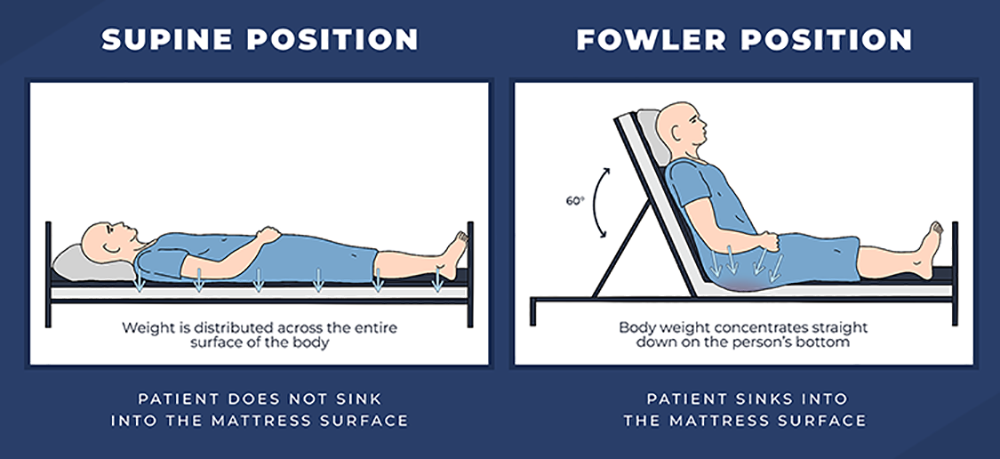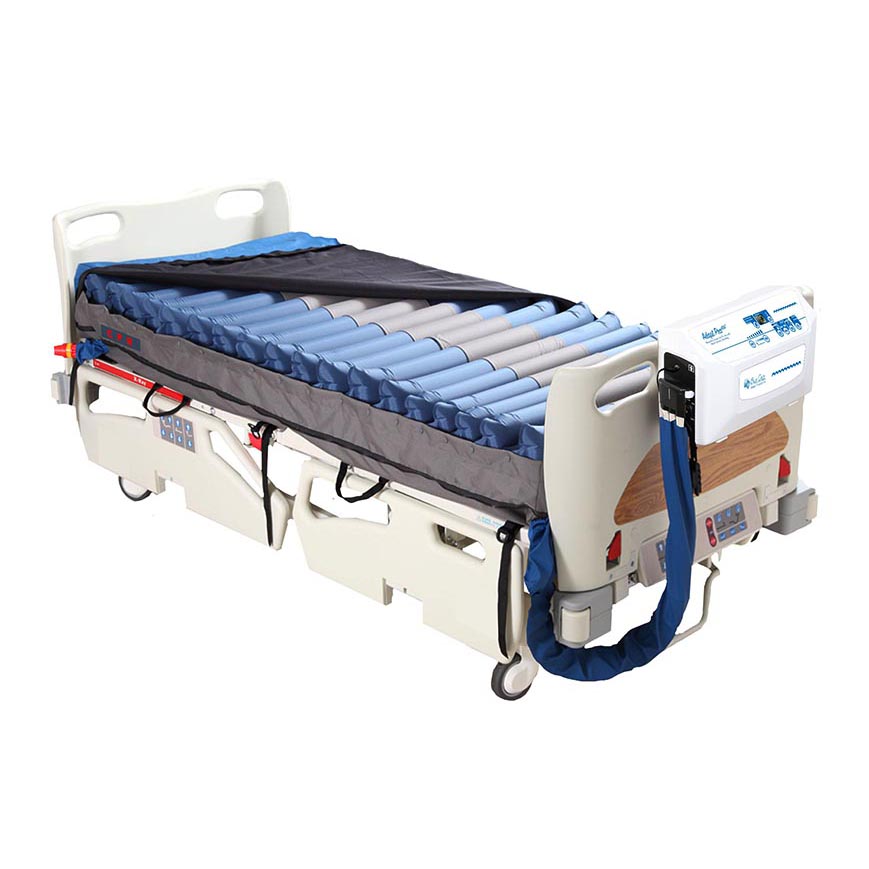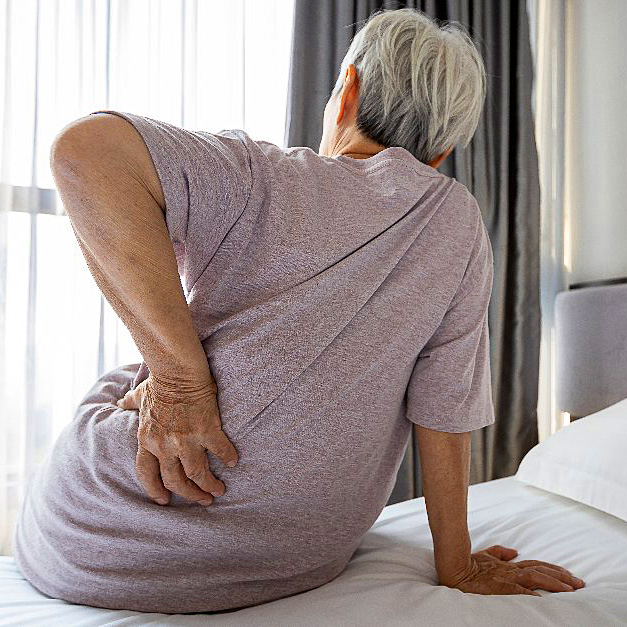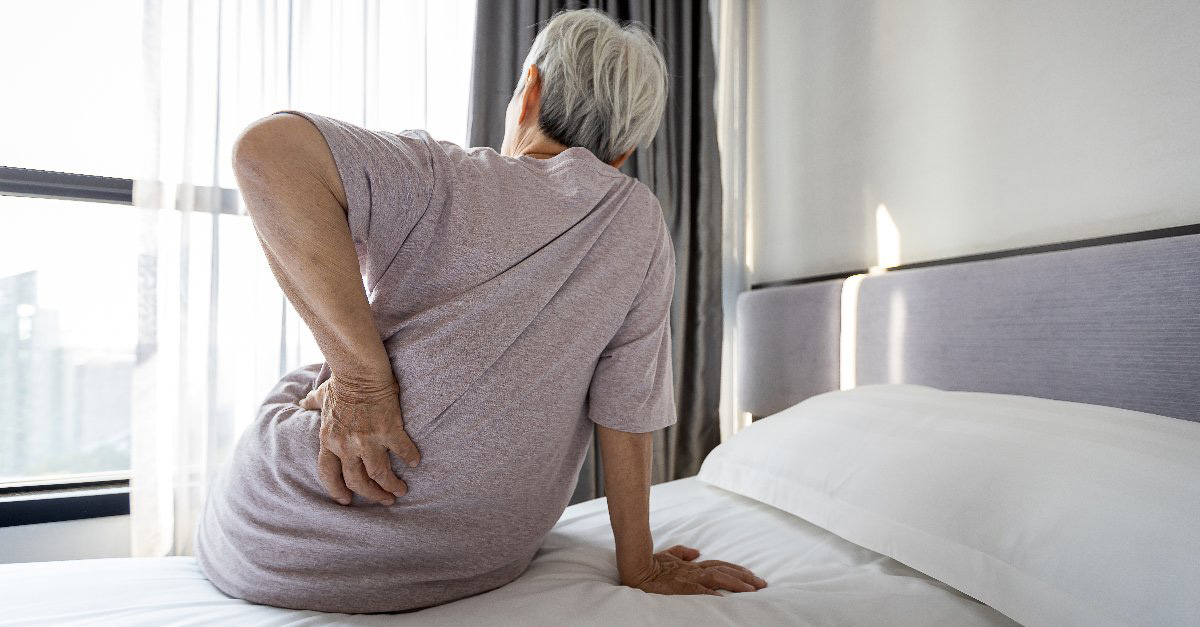How sinking into an Alternating Pressure Mattress can lead to a bed sore.
It is a common problem for people to sink into an alternating pressure mattress. There are many reasons why this can occur. Besides discomfort, sinking into a mattress can be the hidden cause of skin breakdown, infection, and hospitalization. In this article, I will discuss what might cause someone to sink into their alternating pressure mattress, how sinking can lead to a bed sore, and how to avoid it.
You've got that sinking feeling.
Sinking is caused by the inability of an alternating pressure mattress to provide proper support. Here are a few things that may contribute
- - Mattress
- - Alternating Pressure Pump
- - Bed Frame
- - Bed Position
- - Body Weight
- - Body Shape
Alternating Pressure Mattress & Pump
There are significant quality differences between alternating pressure mattress systems. They vary greatly in how and when they should be used. These differences not only affect reliability but how effective the mattress is at prevention and healing.
- - Quality of the mattress & pump - Many of the consumer-grade mattress systems available on sites such as Amazon or those often supplied by insurance, are usually constructed of inexpensive parts of inferior quality. The air bladders often leak, and the pumps do not supply enough air to provide proper support or stop working entirely, especially for those over 180 lbs. The quality of the mattress & pump is an important factor. Hospital-grade systems and far more powerful. durable, reliable, and functional.
- - Air Leaks in the mattress - Air leaks due to punctures, bladder failure, or inferior bladder material. The CPR valves and hoses can crack or leak air. Once again a hospital-grade system features self-sealing durable TPU bladders, and more to ensure the proper air pressure
- - Air restriction - This is due to poor quality air hoses that bring air to each bladder. A quality mattress system with non-kinkable hosing is key.,
- - Weight capacity of the mattress - Most consumer systems state they support 350 lbs. This is highly questionable and often over-stated. Just because a mattress says it supports 350 lbs. does not mean it does.
- - Age of mattress and pump - As the mattress and pump wear due to use (2 - 5 years of continual use), it is natural for the pump to experience a reduction in air output. If the mattress is older and sinking, replacement of the pump or system may be the answer.
Anything that affects the internal air pressure of the mattress can lead to sinking. This effect is more pronounced for those over 200lbs.
Even if the alternating pressure mattress is functioning properly a person of any weight can sink into a mattress.
Keep reading!
Bed Frame
The mattress must be on a supportive bed frame. If the base under the mattress is not supportive enough or has a body impression, the mattress will contour to the shape of the frame. This will translate to the surface and cause sinking. A good supportive hospital bed frame is often the answer.
Body Weight
Body weight plays a big role in whether a person sinks into an alternating pressure mattress. Even if the mattress is functioning properly and weighs less than the mattress capacity. It all depends on where the weight is concentrated.
A 200 lbs person can sink into a mattress rated for 350 lbs
Body Shape
People are not all built the same. Some carry weight evenly while others' weight is concentrated in their abdomen, hips, legs, etc. Body shape must be considered. Ex. if an alternating pressure mattress is set for a weight of 180 lbs, however, the majority of that weight is concentrated in the stomach, that person might tend to sink in the middle even in the supine position. This would require a mattress pump adjustment possibly outside the specs of the weight chart provided with each mattress.
Bed Position
If a bed is in the supine position (flat), a person's weight is distributed across the entire surface of the body. Floating on the surface. However, most do not remain in the flat position.
During the day or at night, the head of the bed is inclined to provide comfort, TV watching, eating, and more. The degree of incline is referred to as "FOWLER" (15º - 45º is called semi-fowler and 45º - 60º is known as Fowler).
EXAMPLE: A 200 lb. person lay flat on a mattress. Their body weight is distributed across the surface of the mattress. However, when the head of the bed is inclined and the person is placed in a more seated position (Fowler), the 200 lb. body weight shifts from being supported over their entire body mass to concentrating straight down on the person's bottom. This causes most people to sink into their mattress and requires the caregiver to make a pump adjustment to help prevent sinking.

It's simple physics
When a 200 lb. man walks, he exerts 20 psi because his weight is supported momentarily by the wide heel of a man's shoe. A 100 lb. woman exerts much more psi when she wears heels. Depending on the area of the heel, she can exert as much as 1600 psi under a 'stiletto heel' ¼ inch on a side.
How sinking into an alternating pressure mattress can create skin breakdown.
During the day, a person may change their bed position multiple times. It is during those times that person is at higher risk of sinking into the surface of the mattress.
Sinking into a mattress causes the person to slide deeper into the mattress. When the person slides there is a much higher risk of skin shear. Skin Shear is a leading cause of skin breakdown and bed sores. This is often seen in the coccyx or sacral area.
How to prevent alternating pressure mattress sinking and reduce the potential for skin shear.
If a person is sinking all the time, regardless of position, and the alternating pressure mattress is set to the manufacturer's specification:
1) Check the mattress for leaks
2) Check the output of the pump is within spec
If there are no leaks and the pump is set to the manufacturer's recommendation and the person is still sinking, repair or replacement the mattress system.
If a person is sinking upon change of position only and the mattress is set to the manufacturer's specification:
1) Slightly increase the pressure on the pump -
Unfortunately, this means the patient or caregiver must change the mattress pressure every time the head of the bed is inclined and change again when the mattress is in the flat position. Also please note: that increasing the pressure at the pump will increase the pressure in the entire mattress rather than just in the sacral area where it is needed.
Warning: If the increase means the mattress pressure is beyond the manufacturer's specifications, check with your healthcare professional.
2) Make sure nothing is crimping off the air hoses.
How an Automatic 2-Stage Fowler Function can help prevent mattress sinking and bed sores.
With recent advances in alternating pressure mattress technology, Blue Chip Medical developed an automated mattress system that automatically adjusts the mattress pressures based on the degree of incline at the head of the bed. It's called an "Automatic Fowler Function" This advance will not only automatically adjust the mattress pressure without the need for a caregiver, but only adjusts the pressure in the sacral area where it is needed most. This feature is found on Blue Chip Medical's Adapt Pro Elite™ Alternating Pressure Mattress with Enhanced Low Air Loss. The Adapt Pro Elite™ reduces the need for pump adjustments, improves comfort, and helps to prevent sinking, sliding, and skin shear for the prevention and treatment of bed sores.
Adapt Pro™ Elite - Alternating Pressure, Enhanced Low Air Loss Mattress System with Automatic 2-Stage Fowler Function
The Adapt Pro Elite™ features the most advanced technology and dynamic customized patient care for the treatment and prevention of stages I-IV pressure sores. Adapt Pro Elite™ offers advanced Alternating Pressure and Enhanced Low Air Loss therapy. The Automatic 2-Stage Fowler Function measures the degree of incline at the head of the bed and automatically adjusting pressures in the Sacral bladders to prevent patients from sinking, sliding and sheaing. The Adapt Pro™ Elite is utilized by top hospitals and even offers hospital-quality woundcare at home.

ADAPT PRO™ ELITE
Alternating Pressure Enhanced Low Air Loss Mattress System
- Alternating Pressure Therapy
- Enhanced Low Air Loss therapy - Built into the cover
- Automatic 2 Stage Fowler - Prevent sinking and skin shear
- Patient Sensing Technology automatically adjusts mattress
- Sealed bladders for better comfort and immersion
- Precision Comfort Control
- Static Care Mode with fall back
- Available in a variety of widths 36", 42", 48" & Custom
- Fits all hospital beds
- Ultra-quiet Pump
- Supports up to 350 - 800 lbs.
- Optional Pulsation Mode and side bolsters
The information above is general in nature and is not meant to be utilized to diagnose or treat any condition. Always refer to your physician when seeking medical advice.

About the Author:
Jeff Adise has worked in the wound care industry for over 27 years. He is a product specialist and the developer of innovative therapeutic support surfaces for the treatment and healing of Stages I-IV pressure injuries in home recliners, lift chairs, wheelchairs, and beds. His innovative products are recommended for use by wound care specialists, physicians, and caregivers, across the US. In addition, Jeff is currently collaborating with a team of Doctors and Ph.D. researchers to develop and gain FDA approval for a groundbreaking new topical drug. The promising new drug has been shown to greatly improve the quality and speed of wound healing while reducing infection.To Contact Jeff
E-mail: jeff@comfortsbest.com
Phone: (914) 262-7458



